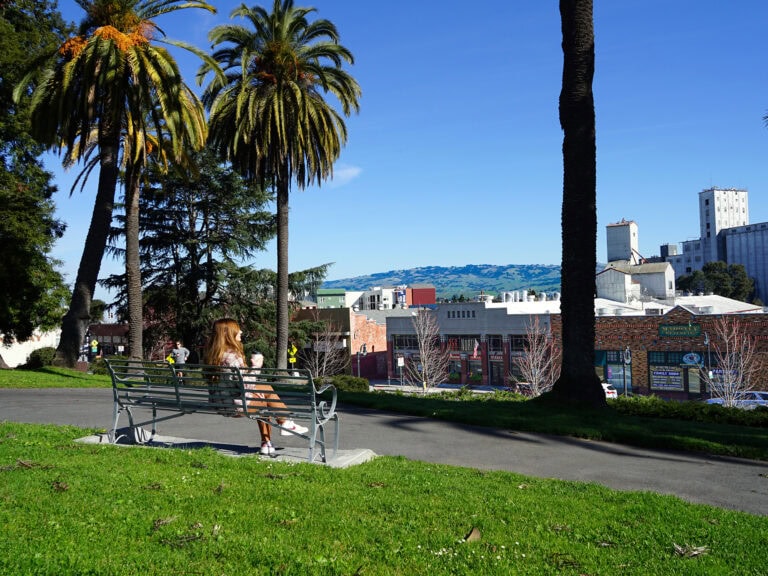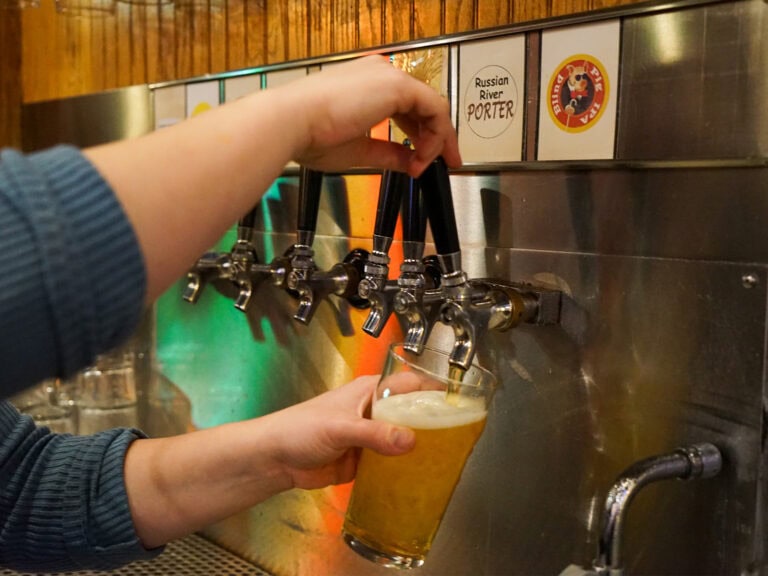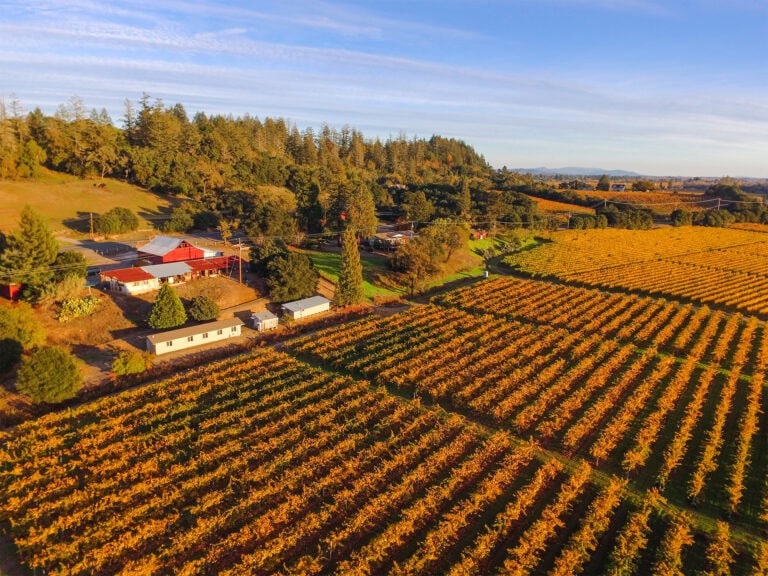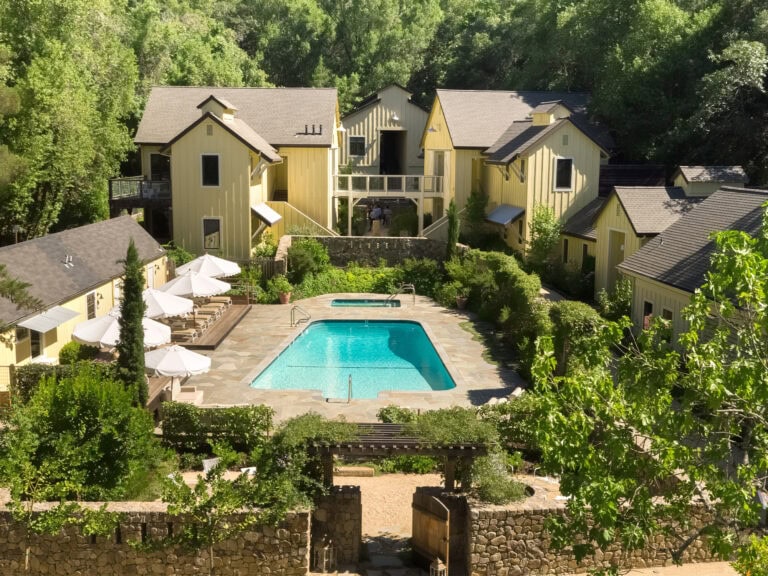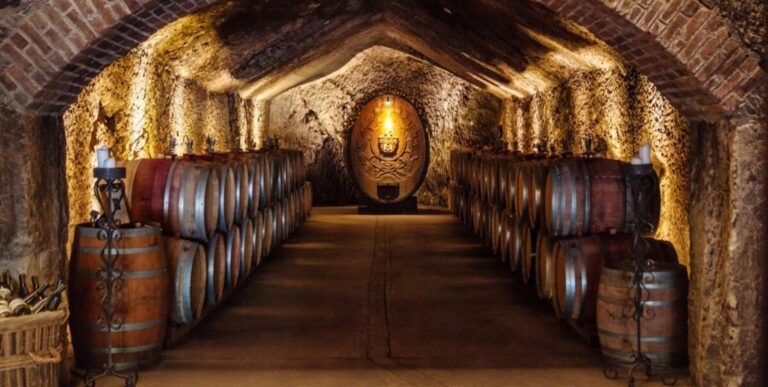Lifecycle of Wine Grapes and What to See at Each Stage
Late summer and autumn are exciting times to be in Sonoma County, as wine harvest is in full swing. But while harvest is vital to winemaking, it’s just one part of the lifecycle of wine, which goes through a fascinating evolution every year.
Here we follow the lifecycle of wine as it unfolds in Sonoma County, and highlight what you can see and do during each stage. If you love wine, any time is a good time to visit!
Written by Melanie Wynne
The Beginning: Planting a Vineyard
Planting a Vineyard
Every vineyard starts with a plot of land, but not every plot makes a good vineyard. A site first has to be evaluated (ideally by an experienced vineyard manager) for its microclimates, sun exposure, and elevation; tested for its soil composition; and matched with one or more compatible grape varieties.

Once this match has been made, the vineyard manager has to decide how to orient the vineyard rows (e.g., north-south or east-west) to catch the best combination of sun and shade; how far apart to space the vines; and how to trellis them.
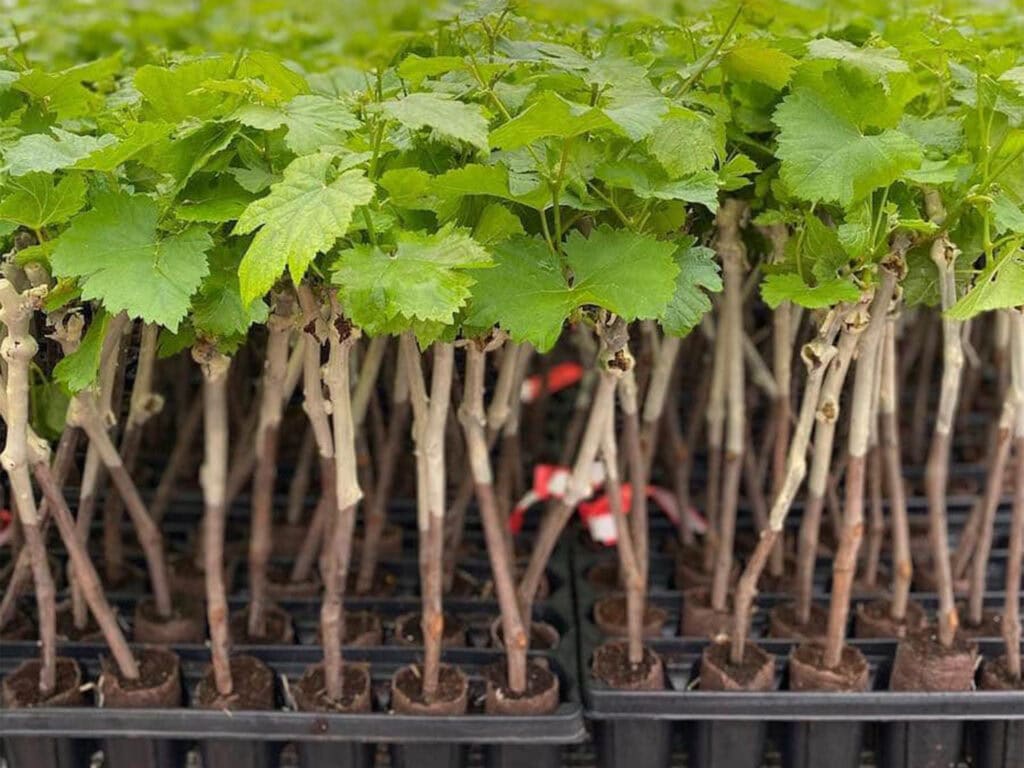
Baby grapevines are then purchased from specialty nurseries that ensure the plants are free of pests and diseases, as some of these can destroy a whole vineyard, or even a whole region’s vineyards.

Once planted (ideally in early spring), each baby vine will be protected by a plastic carton that shields it from cold until it can safely stretch its tendrils.
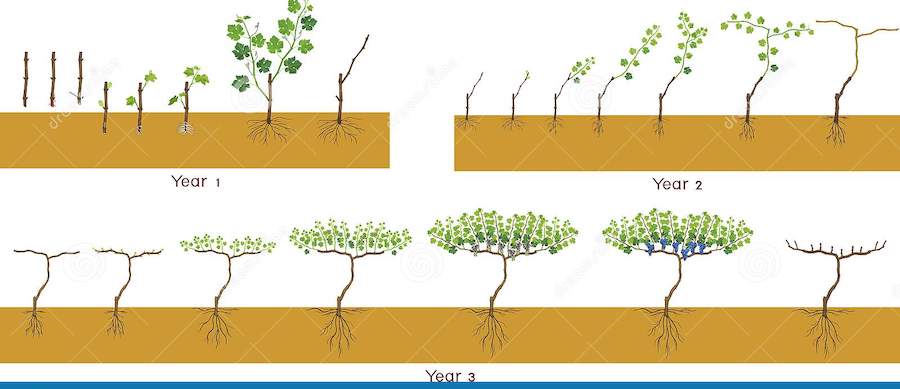
But not so fast: These growing vines will actually keep you waiting three years until they establish the strong roots, arms, and canes required to support healthy, high-quality grapes. And during those three years, the vines will require lots of care, from water to pest/disease control and (at long last) pruning.
Winter: Dormancy & Pruning
November – February: Dormancy
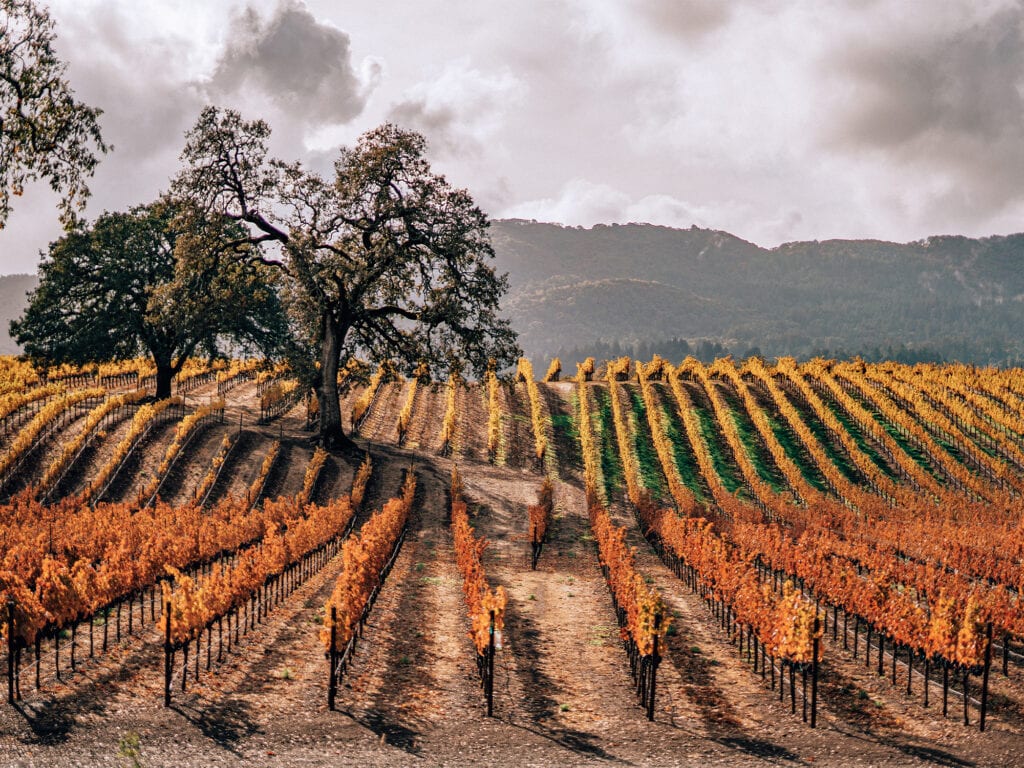
During the early winter, vineyards and wineries are quiet places. Vine wood becomes increasingly bare as the last leaves fall, and birds pick off small grape clusters left behind. Winemakers test the development of their wines by drawing samples for testing, tasting, and blending, sipping, swirling, sniffing and taking notes at tables full of wine glasses.
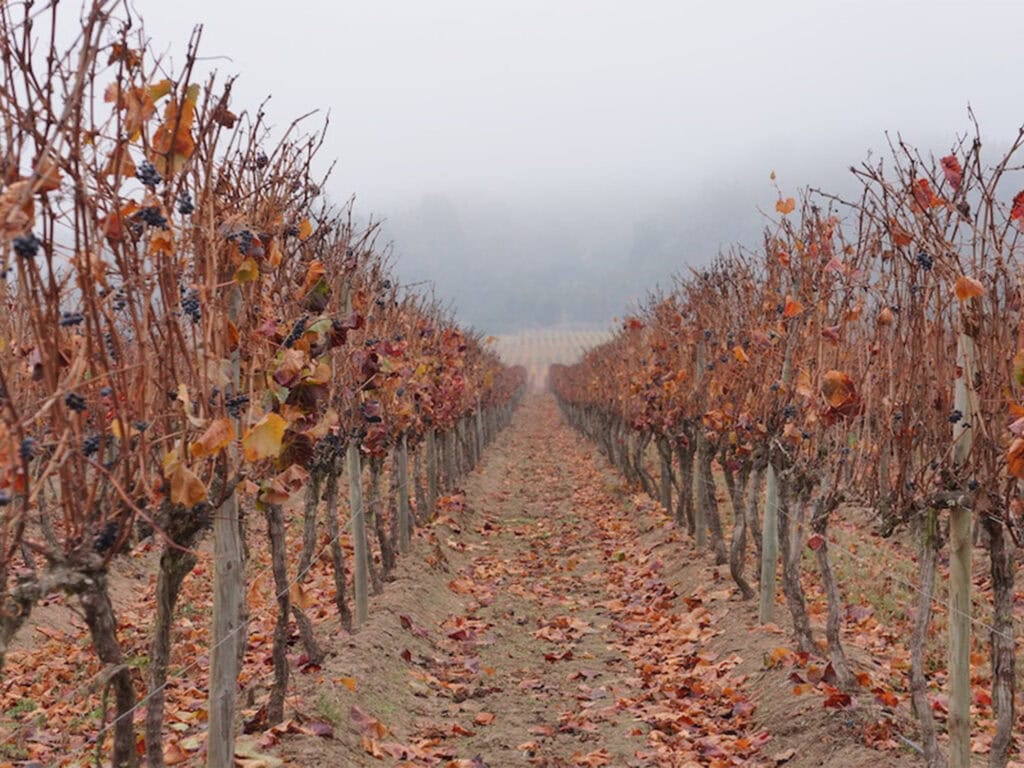
Thick morning mists and deep orange sunsets settle over vineyards tangled with empty branches, and as the season grows late, rows become lush with rain-fed grass. Chilly temperatures mean it’s time to break out that fleece jacket or puffy vest. Winery tasting rooms tend to see less traffic, so this is an excellent time to receive one-on-one attention and education about Sonoma County wines, making new friends along the way.
WINE EVENTS DURING DORMANCY:
- Wine & Food Affair (November)
- Winter Wineland (January)
January – February: Pruning

When a vineyard’s first two growing seasons are finally over, it’s time to prune the vineyard in preparation for its third growing season — and its first harvest. At this stage, the goal of pruning each vine is to achieve the proper balance between leaf shoots and floral buds.
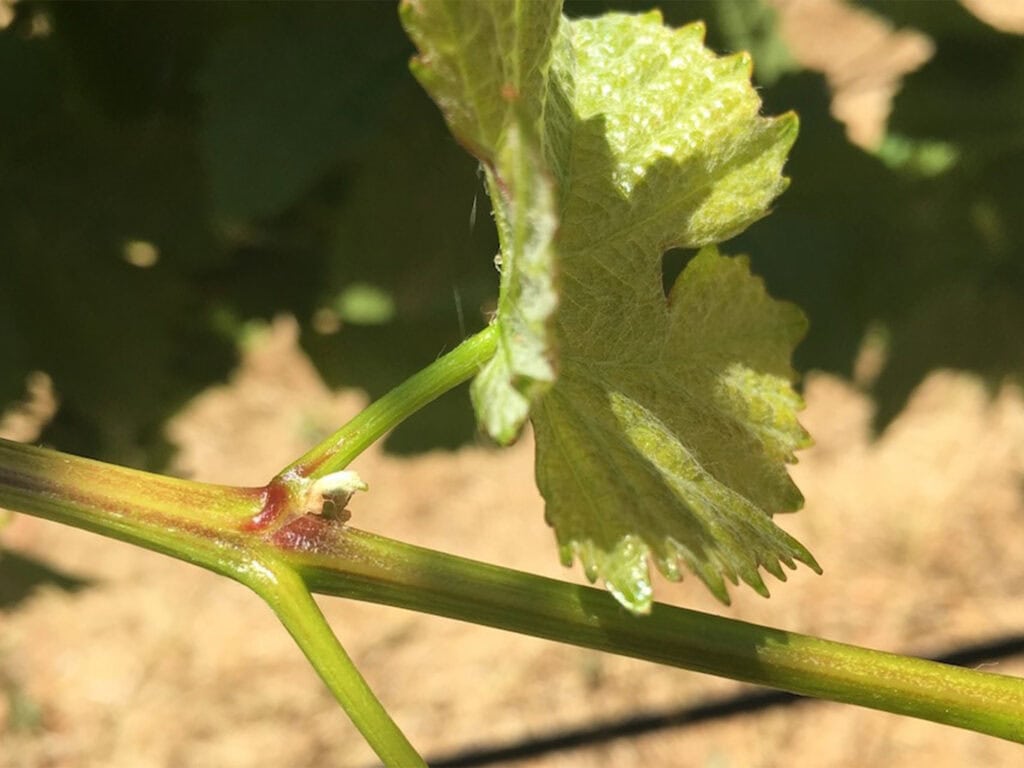
Too many leaf shoots and not enough floral buds will produce an overabundance of leaves, which will prevent grapes from ripening properly by diverting nutrition and providing too much shade. On the other hand, too many floral buds and too few leaf shoots will yield a windfall of grape clusters, but not enough leaves to help feed or shade them.
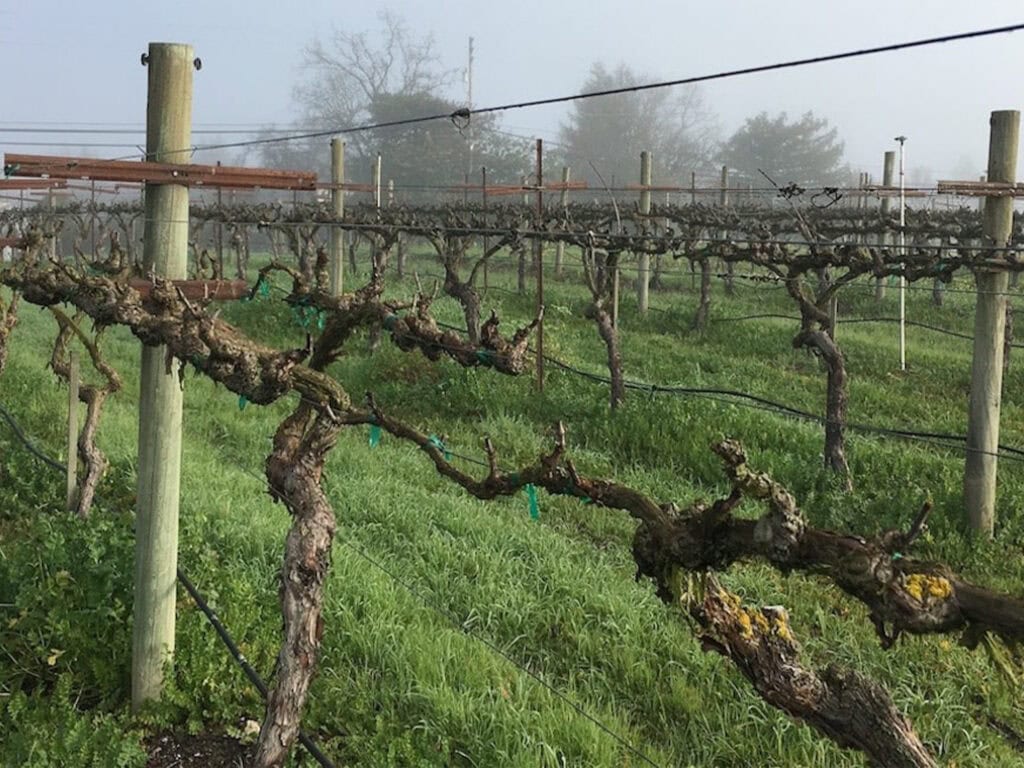
While vineyards tend to look bare this time of year, rest assured that important work is afoot. Pruning is crucial to the production of premium quality winegrapes.
WINE EVENTS DURING PRUNING:
- Winter Wineland (January)
- Great Sonoma Crab and Wine Fest (February)
Mid-March – April: Bud Break & Bottling
Bud Break

About six weeks after pruning, the official start of the growing season arrives: Bud break. Axillary (or leaf) buds begin to swell and burst, followed by the unfurling of leaves and tendrils, finally bringing some greenery back to winter-dormant vineyards.

This is also mustard season, so keep your camera poised for acres of tall yellow flowers. Mustard is a common cover crop grown in vineyards during their dormant winter season, as once it’s mowed (usually in April) it replenishes soil with nitrogen, protects naked soil from erosion, and helps limit a soil’s population of nematodes (tiny worms that damage root systems). Hooray for mustard!
WINE EVENTS DURING BUD BREAK:
- Wine Road Barrel Tasting (March)
- Passport to Dry Creek Valley (April)
Bottling
The last step of the winemaking process, bottling also comes in late March and April. When the winemaker decides the wine is ready for bottling, and winery staff makes sure there are enough bottling supplies (e.g., glass bottles, boxes, labels, corks, etc.) and can carefully clean the hoses that will drain the wine from their storage vessels to the bottling line.
Some wineries have their own bottling-line equipment, while others have to rent the services of a mobile bottling unit. To see how an automated bottling line works, check out this video:
Once wine is bottled, it needs to rest for about three weeks to recover from the shock of traveling to its new surroundings. But soon enough, it’ll be time for wine clubs throughout Sonoma County to release their spring wine allotments, with small-production offerings and parties amidst spring blooms of wildflowers.
*Insider tip: Visiting a winery to pick up your orders mid-week as opposed to on the weekend can help you beat the crowds and possibly extend your stay, as lodging properties often offer mid-week deals on reservations.
WINE EVENTS DURING BOTTLING:
- Sonoma County Wine Month
- Passport to Dry Creek Valley
Mid-April – June: Flowering
Flowering

About a month after bud break kicks off, leaves are now fully unfurled, and flowering begins. Here’s what this means:
Grapevines develop compound buds with three inner buds, each with the potential to grow a small cluster of tiny flowers (or an inflorescence). In most cases, only the largest of these three inner buds (known as the primary bud) blooms, and each flower on the resulting cluster has the potential to become a grape berry.
Warmth is vital to grapes as they bloom, but early spring nights in Sonoma County can bring damaging frosts. When extreme cold threatens, some Sonoma County vineyard growers ward off frost with huge fans that circulate air around their vines, while others water their vines with sprinklers in order to produce a protective coat of ice (weird but true).

Flowering (also called bloom) can take up to two months, during which time wind and small insects help pollinate the grape flowers. Once pollination is complete, little caps start to fall off each flower, triggering the next stage: Fruit set.
May – June: Fruit Set & Leafing
Fruit Set
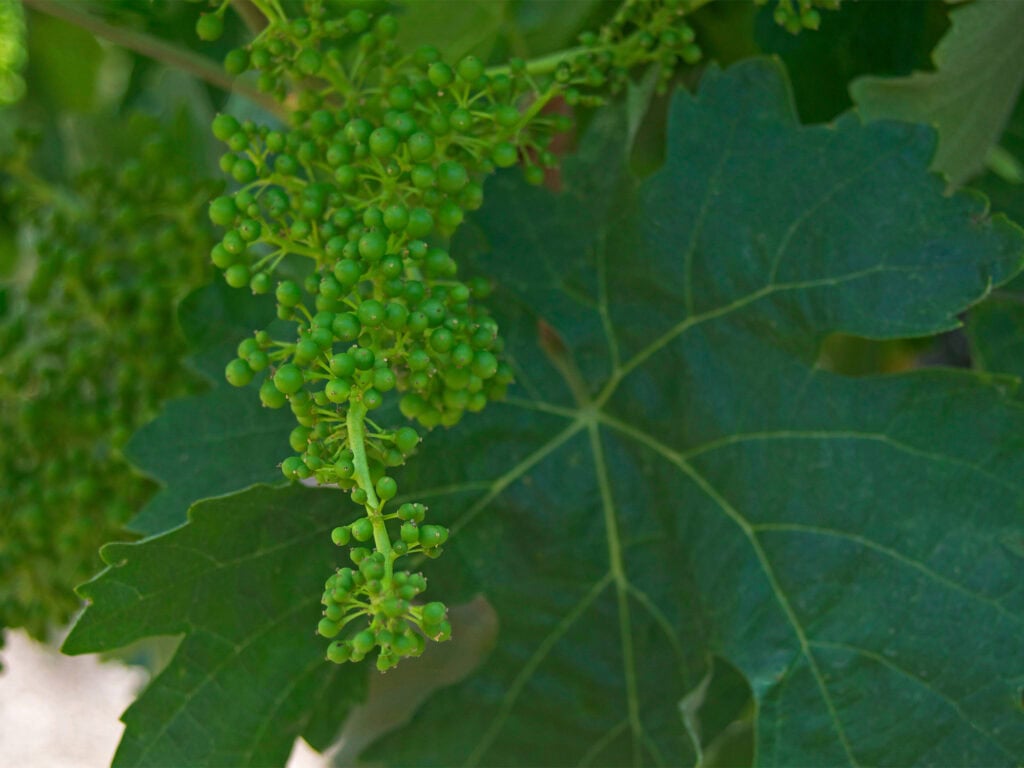
Fruit set sees the first emergence of grape berries. During this stage, regardless of whether a grape variety is red or white, the grapes will be tiny, hard, and bright green.
Leafing

While grape berries are busy growing, it’s time to start leafing, the practice of removing roughly 20% of a grapevine’s leaves. This enables the vine’s grape clusters to receive sufficient air and sunshine, protecting them from disease while allowing them to properly ripen.
Crop Thinning
As the clusters approach their mature size, a vineyard grower will assess the amount of fruit on the vine. Despite best-laid plans during pruning, the weather, climate, or pollination issues may bring an unbalanced result.

If there’s too much fruit for a vine to optimally ripen, this is the time for crop thinning — cutting off some of the grape clusters in order to let others thrive.
WINE EVENTS DURING FRUIT SET & LEAFING:
- North Coast Food & Wine Festival
- Taste of Sonoma
July – August: Veraison
Veraison
About eight weeks after the start of fruit set, veraison begins. A French term adopted throughout the winegrowing world, veraison (verr-AY-jhun) translates to “change of color of the grape berries.”

During this stage, grape berries will begin to soften and swell. If the grape varietal is red, its berries will first blush pink, then transition to their appropriate shade of burgundy or purple. If the varietal is white, the berries will merely lighten, becoming more golden and translucent as they slowly ripen.
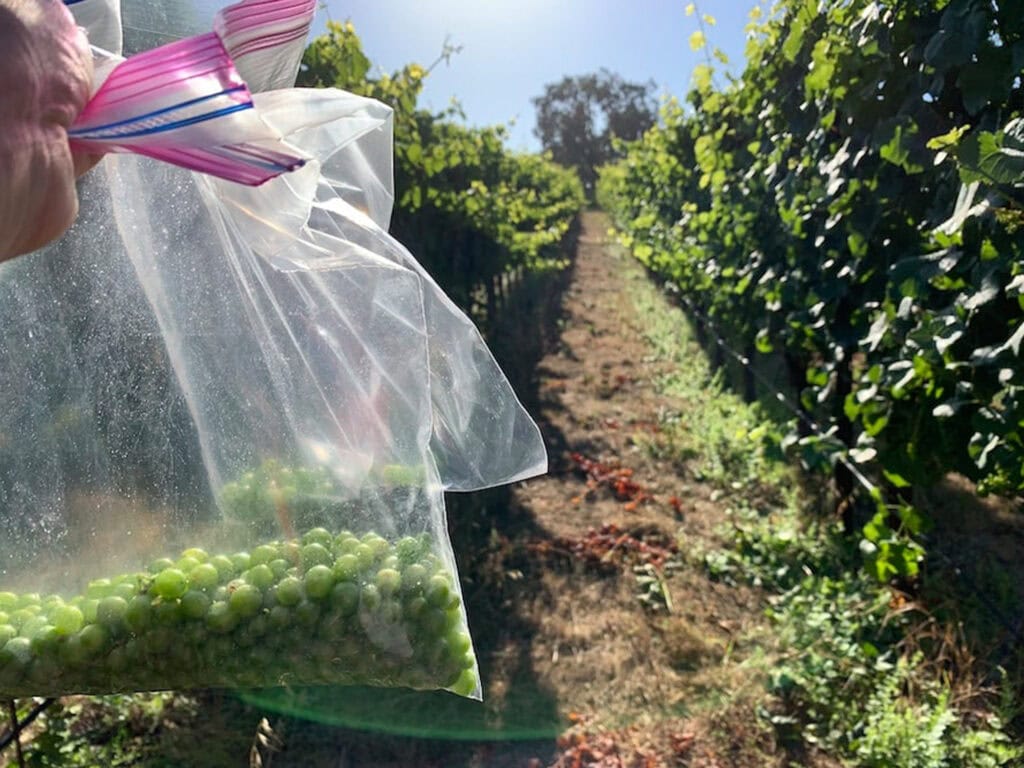
Veraison lasts about six weeks. During this time, winery staff will make regular visits to their supplying vineyard to collect a sampling of grape berries from every block, then will have them lab-tested to track their sugar and acid levels, as well as the development of their flavors.
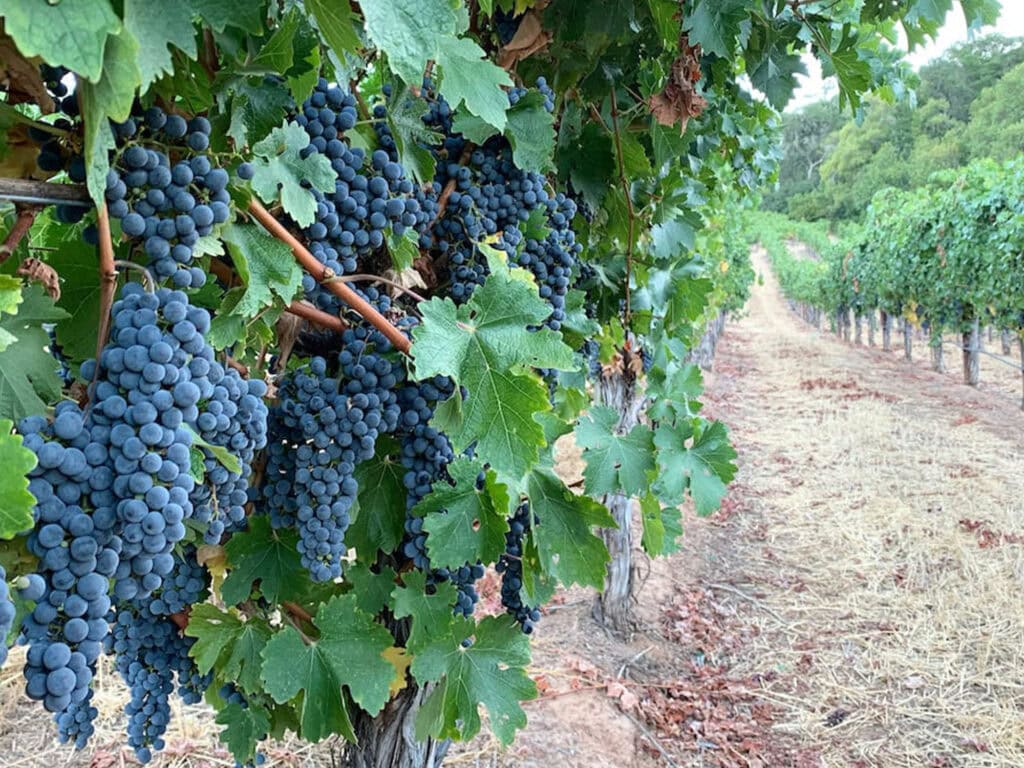
When the tests (and tastes) display the desired results, it’s time to harvest!
August – October: Harvest
Harvest in the Vineyards

Ripe grapes are generally harvested in the middle of the night or early in the morning, when cooler temperatures enable grapes to retain their freshness, and enable workers to avoid the heat of the day. When you see super bright, stadium-style lights shining in the vineyards during this time, it’s a sure sign that grapes are being harvested by vineyard crews.

If a vineyard is harvested by machine rather than a crew, the time of day is less important. Machines can’t be used for thin-skinned grapes like Pinot Noir, but when they can be used, they shake clusters off vines at a thrillingly rapid rate. While it takes a vineyard crew several-to-many hours to harvest a vineyard, a machine harvester can often do the job within one or two.

Harvest is a beautiful time to be out in Sonoma County’s vineyards, but those ripe grapes are usually kept behind locked gates to keep out hungry humans, birds, and animals (such as deer and rabbits). To see all those gorgeous clusters up close for yourself, check with your favorite wineries to see about special events like harvest lunches and guided vineyard walks.
Harvest at the Wineries

During harvest, wineries are also abuzz with activity. Trucks (often with refrigeration) bring grapes to winery crush pads in huge plastic bins. Once weighed, the bins of grape clusters are forklifted onto a sorting table (or into a more high-tech optical sorter), where they’re quickly yet carefully examined for unripe berries, rot, leaves, vine wood – anything that could interfere with a wine’s flavors must be removed and tossed aside.

If sorting sounds fun to you, ask your favorite winery if you can help sort grapes for a few hours, or even days. A winery might appreciate an offer of help with sorting, not to mention sweeping and hosing down the crush pad afterward.
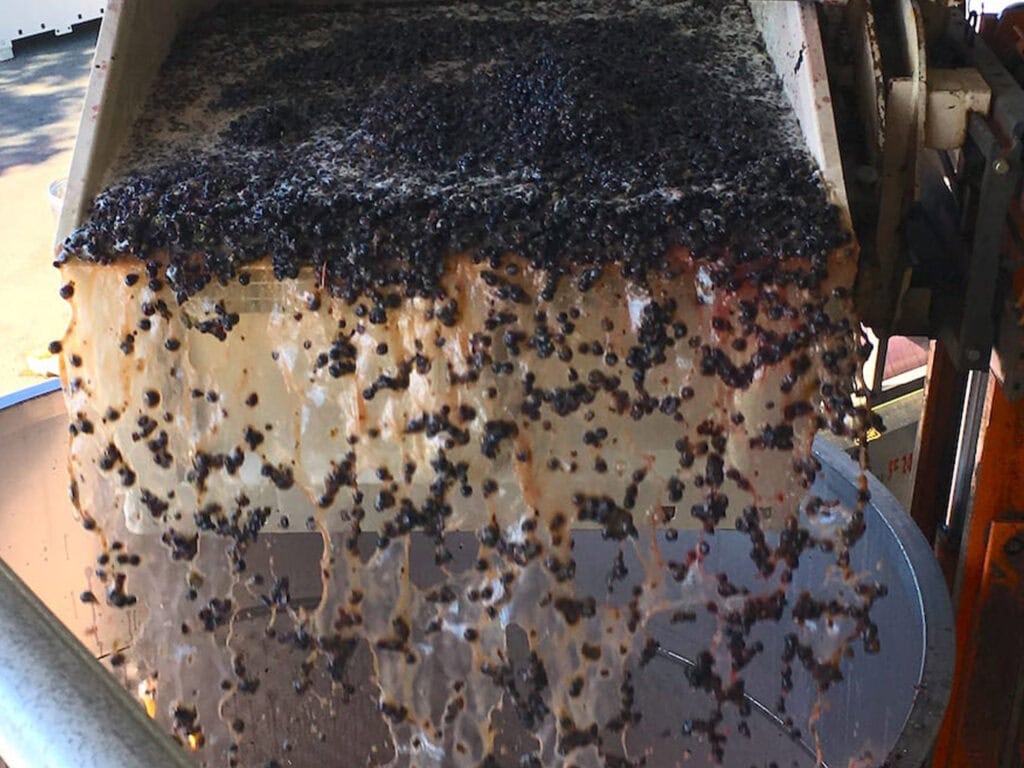
Post-sorting, green grapes are sent straight to the press, where their juice is separated from their skins and seeds, then pumped directly into a stainless steel tank. Black grapes don’t get pressed yet, but instead are kept as whole clusters or de-stemmed grape berries, transferred to bins, vats, or stainless steel tanks, and left to ferment on their skins in order to impart color and flavors.
Both white grapes and black grapes now go through fermentation. During this process, yeasts — either natural or commercial — consume the grapes’ sugar and turn it into alcohol. Natural yeasts are those that occur naturally on the grape skins, and while they can produce lovely, complex aromas, they can also effect fermentation in erratic ways. To produce a more predictable fermentation, a winemaker may add packaged commercial yeasts.
White wine fermentation takes about two weeks, and then a winemaker has a few options. The wine can be racked (pumped by hand) into barrels, or left to chill and settle in stainless steel. Wine in barrels might be stirred with a long metal stick to bring up the lees (dead yeast cells), adding more flavors and aromas. Or, the wine could be put through a malolactic fermentation to convert its tart malic acid to smooth and creamy lactic acid.
Red wine fermentation usually takes 5-21 days, during which time grape skins float to the top of their vessels, forming a thick cap (layer) that getsremixed with the juice in one of two ways:
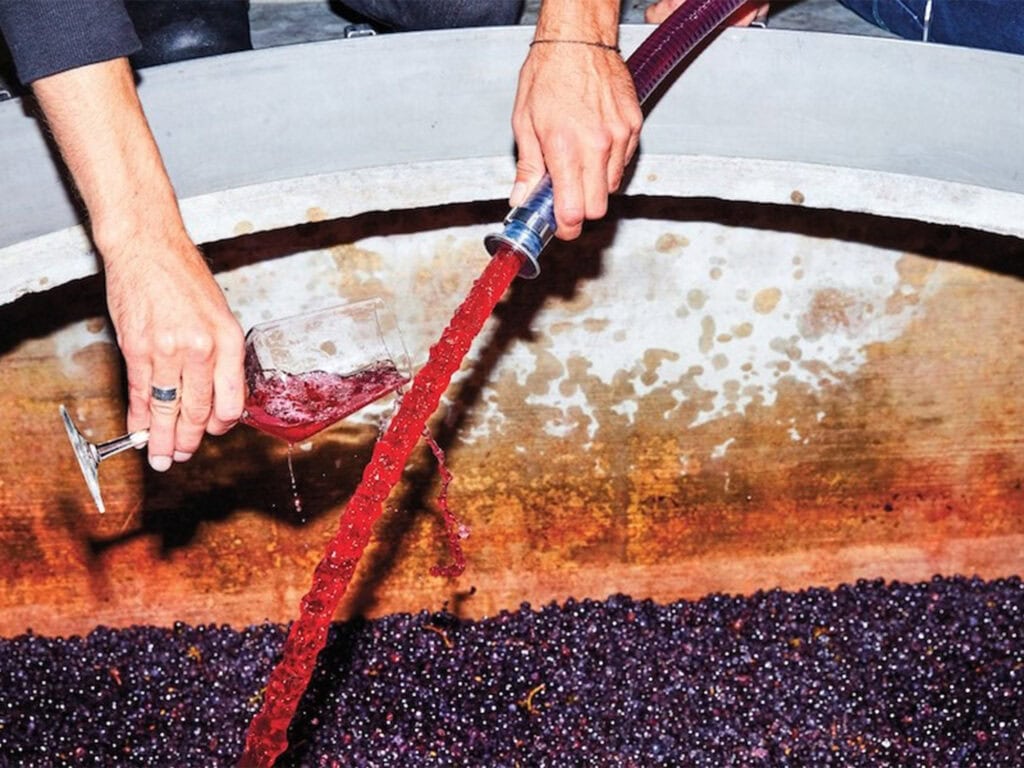
For rich wines with lots of color and flavors, a pumpover is employed, hose-pumping juice from the bottom of the tank and gently spraying it onto the skins at the top. Pumpovers are generally completed twice a day during fermentation.

For more delicate, subtle wines, a punch down is done to (literally) punch down the cap and mix it with the juice. Completed one to three times a day during fermentation, a punch down is accomplished with a long steel tool with a flat, hole-punched end that is either entirely hand-held, or attached to a crane-like pneumatic system.
Some winemakers prefer to have their punch downs performed by more delicate human feet. Some area wineries host grape stomping opportunities, so if this sounds like fun, be sure to inquire at your favorite spots!
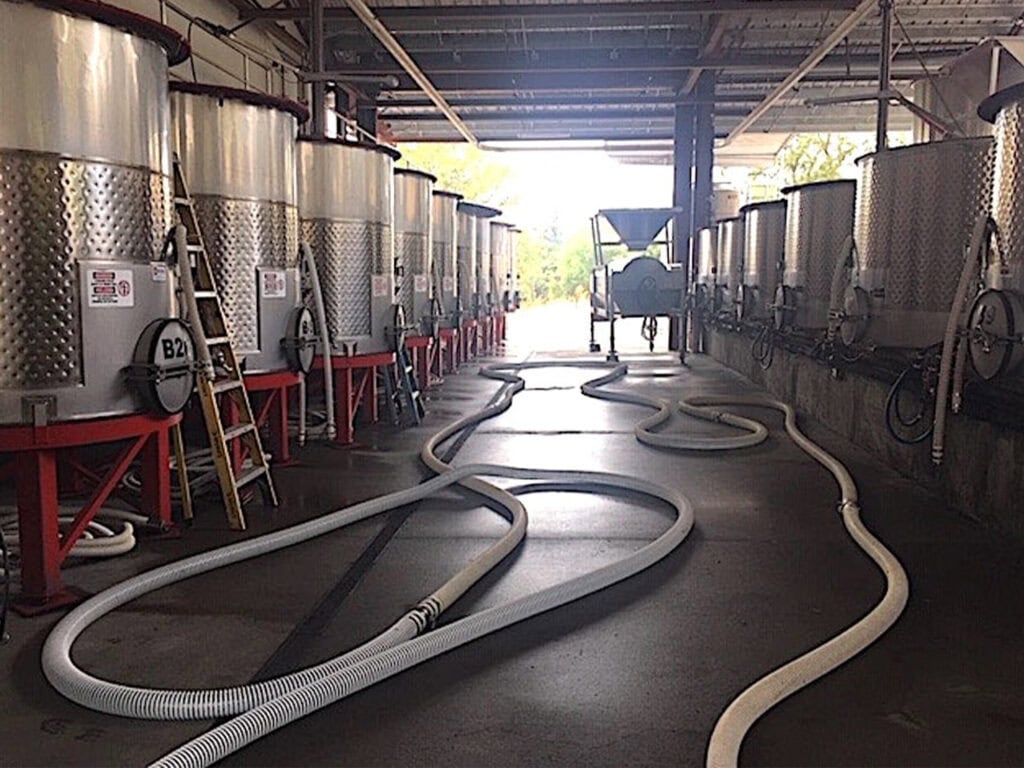
Once the black grape juice finishes fermentation, it’s drained from its vessel and the remaining skins are pressed again to yield more juice. The collective juice will then be transferred to the winemaker’s vessels of choice: Stainless steel or concrete tanks, wooden vats, or barrels. Here the fermented juice will go through malolactic fermentation, then will rest until it’s time for bottling in the spring.
WINE EVENTS DURING HARVEST:
- Access Alexander Valley
- Sonoma County Wine Celebration
- Asti Tour de Vine
- Healdsburg Crush
- Sonoma County Harvest Fair
- Hallowine Run
THIS IS WINE COUNTRY.
Share your experience using #SonomaCounty or #LifeOpensUp








